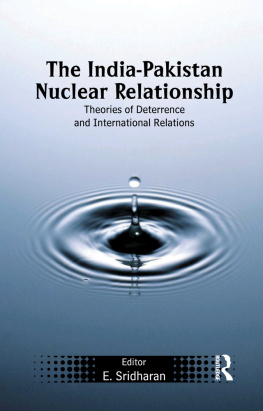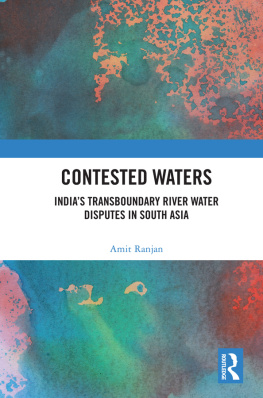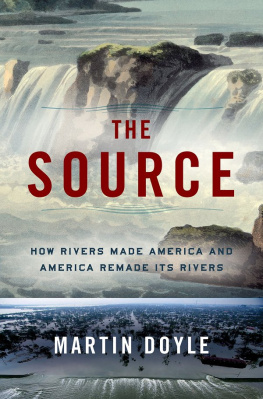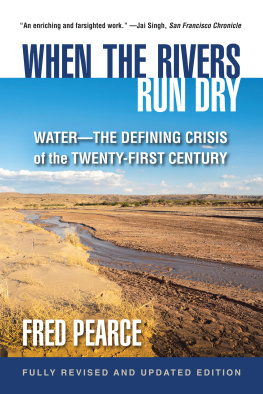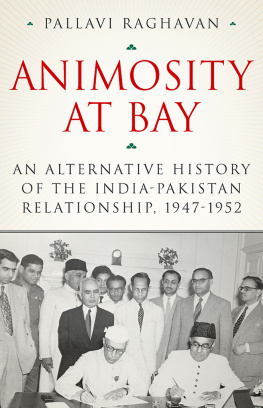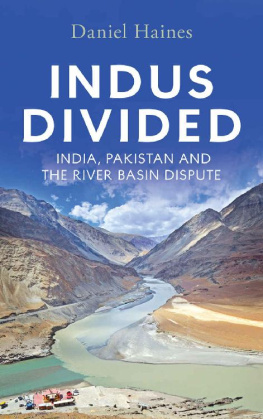Acknowledgement.
During the course of this study many people helped me through their potential and capacitythey possess. Hence I am indebted to all of them. First among all is my supervisor Dr.Muhammad Nazir Kakakhel who, through his insightfulness, guided me to arrive at this stage.I am thankful to all my teachers who taught me at M.Phil level. I am also grateful to administration at Qurtaba University Peshawar campus. In this journey my colleagues andfriends are not behind. Their company and discussion on the topic remained very fruitful tome. I am grateful to all of them. My special gratitude to all those Librarians and librarypersonnels in Islamabad and Peshawar, who rendered their professional services and helpedme in my study. Last but not the least I am thankful to my wife who also played her due rolein achieving this destination. I am also grateful to my kids for taking their time in my studies.
i
Abstract.
A water dispute between India and Pakistan was surfaced in April 1948 when India claimedand stopped the water of river Sutlej. Both the states tried to resolve the dispute bilaterally for three years but they couldnt arrive any decision. Ultimately Indus Water Treaty was signed in1960 between two states with the nine years mediation of the World Bank. The World Banknot only considered the Sutlej but the complete Indus Basin. Out of six rivers of Indus Basin flowing down from India to Pakistan three Eastern rivers were given to India and threeWestern rivers were given to Pakistan. India was also given the right to build run-of-the riverpower plants to generate electricity.
In the light of this right given through Indus Water Treaty, India started building of waterstorages in 1970. Since then India has been continually planning and building power plants on western rivers. Salal Dam, Baghliar Dam, Wullar lake, Kishanganga hydroelectric PowerProject, inter alia, are different issues which came to forefront in due course of the time. Indiahas planned many projects to be built on western rivers in future.
Indian increasing interference on western rivers and manipulation of the treaty provisionsenables her to store sufficient water on western rivers. At the same time, domestically, water is becoming scarce in India and Pakistan. Pakistan has entered into water scarcity range andIndia is almost near. Being deficit in water Pakistan has serious concerns about Indian plans.As India is also becoming water scarce country and already an inter basin water transfer scheme is under process, it is believed that in case of absolute water scarcity in India woulddivert the stored water to other basins. This stage would be the most dangerous one in water relations between India and Pakistan. At this stage water war will become essential as withoutwater there would be no life in lower riparian (Pakistan). Keeping in view the nuclearcapability of Pakistan and India, the nuclear war cannot be ignored.
ii
Table of Contents.
S.No
Chapter-1.Chapter-2.Name of TopicPage NoAcknowledgementiAbstractiiContentsiiiList of TablesviiList of Figuresviii
iii
Issue of Indian Control of Western Rivers28
Summary29
Chapter-3.Water Scenario of India and Pakistan30
Absolutely Scarcity31
Surface Water32
Ground Water33
Population Growth36
Industrial Requirement42
Summary46
Chapter-4. Spirit of the Treaty: its Present and Future48
Western Rivers and New Run-off-River Plants over Western Rivers
v
List of Tables.
2.1. Indian Plan of 1953 for Indus Basin.2.2.Pakistans Plan of 1953 for the Indus Basin.2.3.Banks Plan of 1954 for Indus Basin.3.1.Pakistan Water Scenario.3.2.Average Annual Flows of Rivers of Indus Basin.3.3. Per capita Water availability in Pakistan.3.4.Glacier Inventory in the Northern Area of Pakistan.3.5.Comparative Growth Rate of Population in Pakistan, India and Bangladesh.3.6. Basin wise average flow and utilizable water (in km/year) (Indian)3.7.Annual water requirement for different uses (in km3) (Indian).4.1. Indian hydroelectric power plants on western rivers before Effective Date.4.2.Storages under Construction before Effective Date:5.2. Upcoming Projects in Jammu and Kashmir.5.3.Projects being taken up for the development in State/Central Sector.vii
Figures and Maps.
Figure: 3.1 Falkenmark Index.Figure: 3.2 Rainfall data of major cities of Pakistan.Map: 3.3 Map of Jammu and Kashmir showing Locations of Hydel Projects.viii
Chapter-1Introduction.
In August 1947, the Sub continent was divided into two sovereign states, India and Pakistan.This surgical division led the new born states into a quagmire of many disputes. The waterdispute between India and Pakistan is one of these disputes.During the first spring after theindependence of subcontinent, in April 1948, India stopped the water of eastern rivers (Ravi and Sutlej) flowing to Pakistan1 quite at the time when crops severely needed water. Theproblem was resolved provisionally. However leadership of both the countries (with the helpof technical staff) settled the dispute, in more than a decade time, through the mediation of World Bank on 19th of September, 1960.
Indus Water Treaty divided the six major rivers flowing from India to Pakistan into two categories.2 Eastern rivers (Ravi, Sutlej and Beas) were given to India while western rivers (Indus, Chenab and Jhelum) were allotted to Pakistan. This division is collectively known as Indus Basin System. Hence rivers were not shared but divided between India and Pakistan, though it raised the question whether the sharing would have not been more cooperative andcollaborative than division.3
Indus Water Treaty is regarded as one of the remarkable water treaties in the world, for it has survived even during wars between India and Pakistan. The treaty allows Pakistan to uselimited waters of Eastern Rivers for irrigation and domestic purposes. And on the other handit also permits India to use limited waters of Western rivers for non consumptive purpose. Treaty also restricts both the countries to interrupt the waters of each other.
As per treaty provisions India is also allowed to build hydro electric plants on western riverswithout disturbing the downstream water flows. Six months before starting such a project,
1Danish Mustafa Hydro Politics in Pakistans Indus Basin, United State Institute of Peace, Washington, DC.
2 World Bank, (1960). Indus Water Treaty Article, 1(5)(6).
3 Salman, M.A.,Salman, International Water Disputes: A New Breads of Claims, Claimants and Settlement
Institutions, Internatioinal Water Resource Institutiion, March, 2006, p.2.
India is bound to provide all the data regarding the project under consideration.4 If Pakistandoesnt agree with the plan, India cannot build the project until the problem is resolved.In the light of these provisions of the treaty, India had planned Salal hydro electric project on Chenab River.5 Initially Pakistan had some reservations and advised India to make changes and bring the project in conformity with the provisions of the treaty. Accordingly, Indiaaddressed the reservations of Pakistan and made appropriate changes in the project to make itacceptable to Pakistan in 1970s.6
Another problem emerged in 1985 when India planned to construct the Tulbul NavigationalProject on Wuller Lake.7 Efforts were made to resolve the issue atpermanent IndusCommission. But as the project was thirty three times in access of the prescribed limit,8 thusagainst the provision of treaty, Permanent Indus Commission recorded its failure in 1987.9Meanwhile another problem surfaced when India decided to build another hydro electricpower project on Chenab River upstream from the Salal Dam,10 and named it as Baghliar project. Negotiations between India and Pakistan at Indus Commission and Government level remained continued till 2005 but failed. On 15th January 2005, government of Pakistan requested World Bank to appoint a Neutral Expert to resolve the difference.11 Neutral Expertpresented his expert determination on 12th February, 2007. Though In his determination hehas applauded Pakistans move for referring the points of difference12, but his determinationdoesnt protect the rights of Pakistan being lower riparian.




